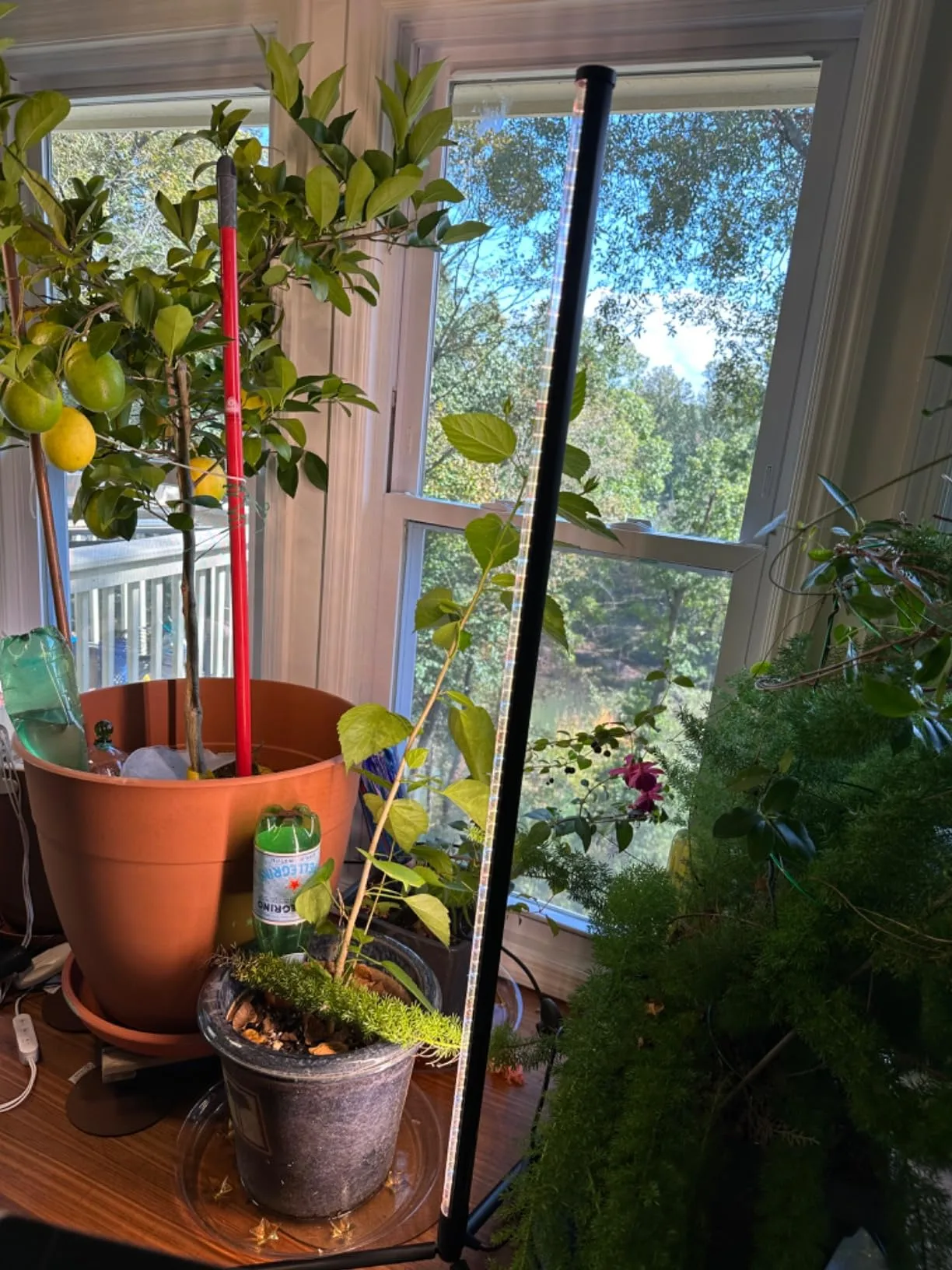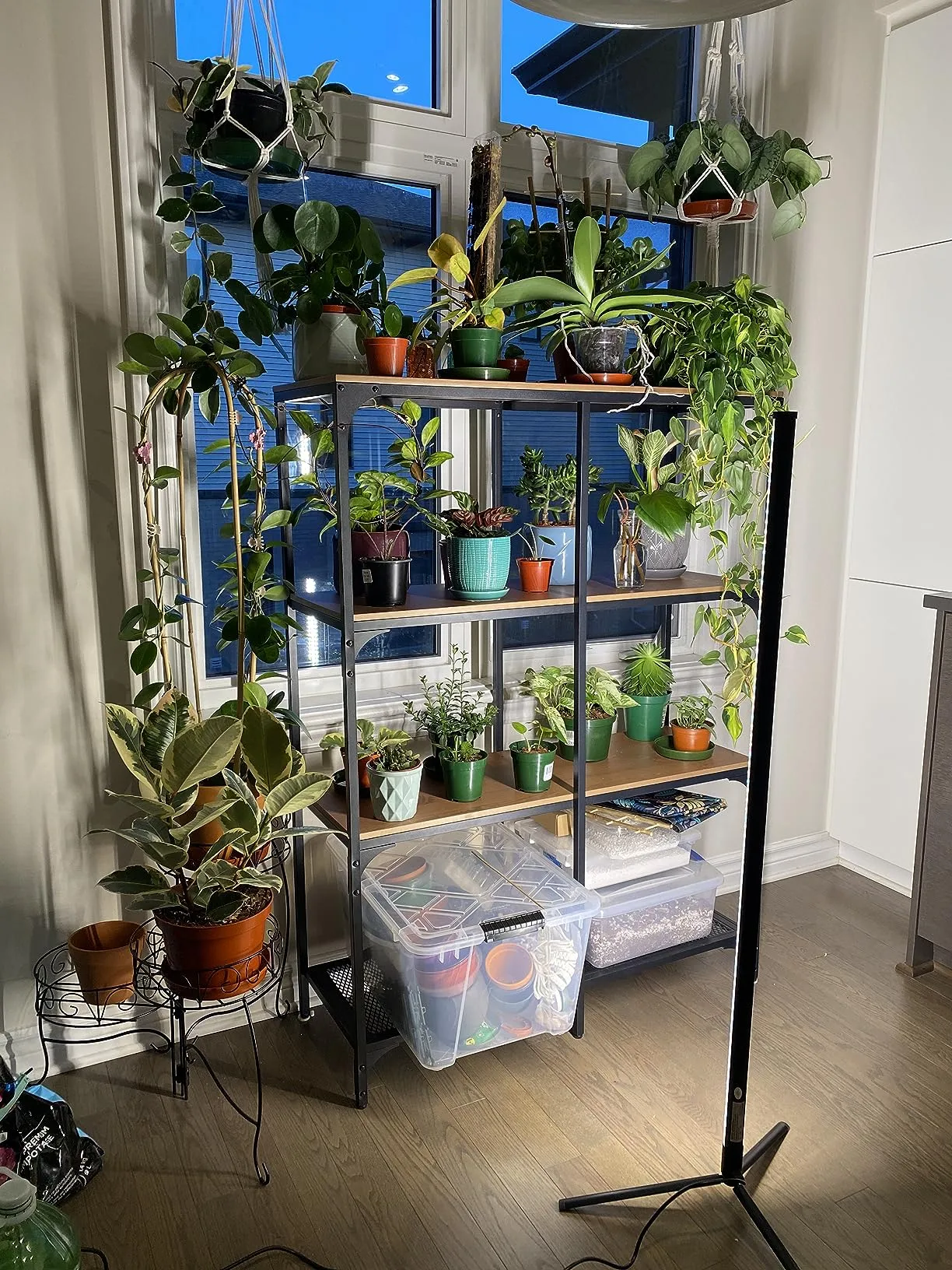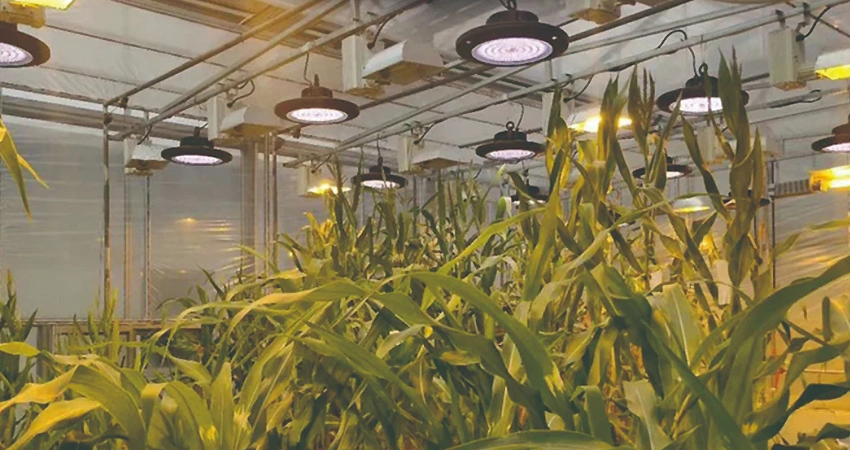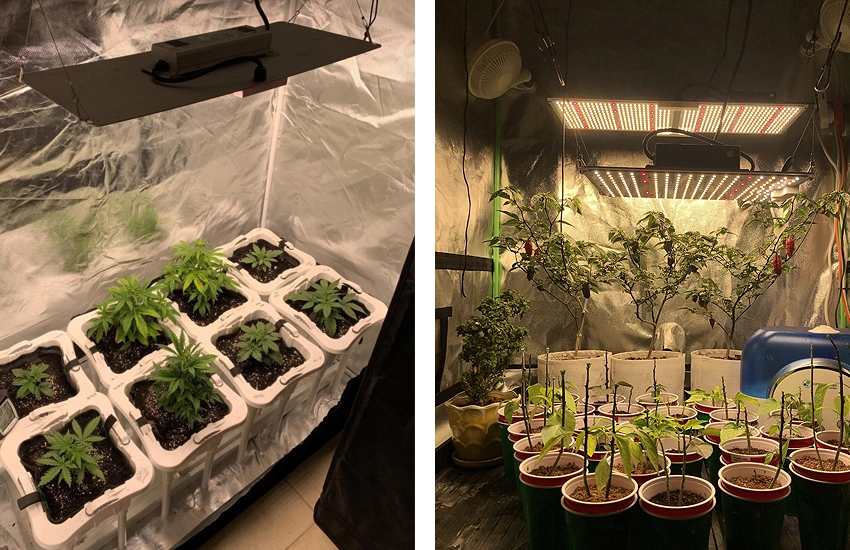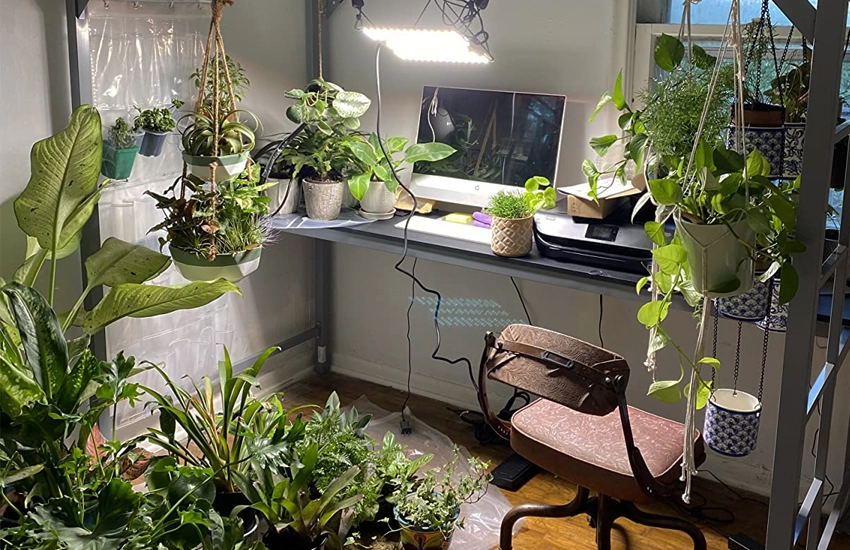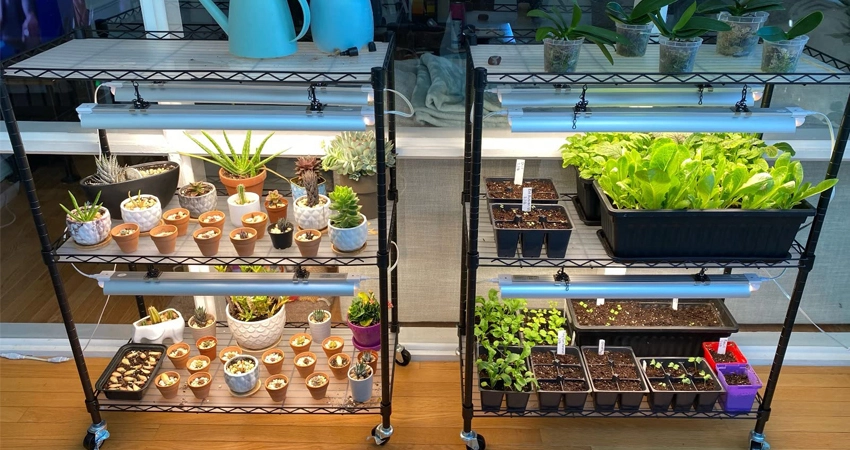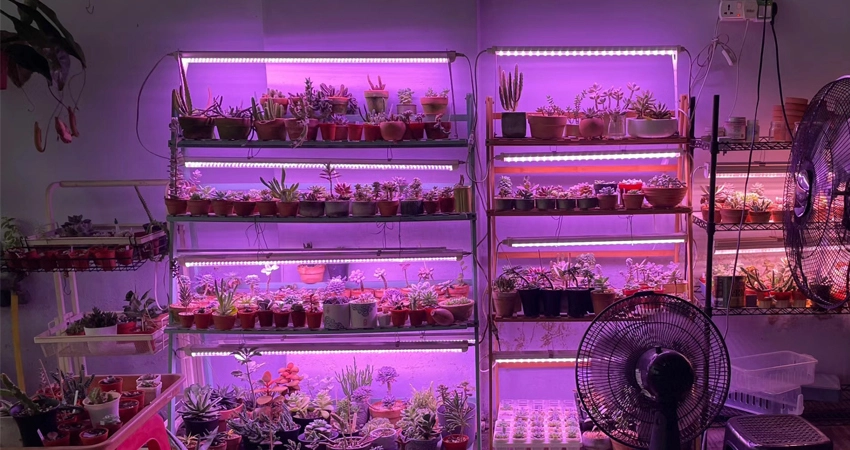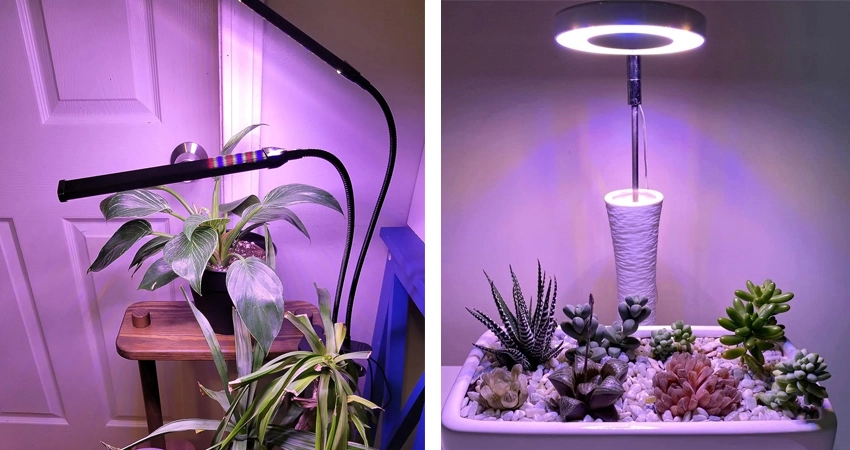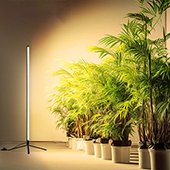Menu
How to Choose LED Grow Lights for Houseplants?
The joy of growing flowers and vegetables at home is something we all know. However, sometimes the lighting conditions at home can be inconsistent, especially in tall city apartments or during rainy seasons. The darkness of early winter can sometimes leave you feeling a bit down, and your plants might feel the same way.
You might have already moved your plants indoors to shield them from the rain or winter, or perhaps you’ve noticed that the once-happy plant by the window is now showing signs of sadness.
At times like these, investing in LED grow lights can be a good idea. They’re like little suns in our gardening lives, curing all sorts of problems caused by insufficient light.
LED grow lights not only help us create ideal lighting conditions in any corner at any time, but they also ensure that our green friends grow strong and healthy.
Table of Contents
Why Should You Get A Grow Light for Houseplants?
Limitations of Natural Lighting Conditions
Everyone knows that Mother Nature blesses us with sunlight, which is the ideal light source for all plants. However, in our living spaces, especially indoors, sunlight doesn’t always come and go.
For example, friends living in north-facing rooms might find that as soon as winter arrives, it feels like a perpetual night inside, and seeing the sun becomes a luxury for the plants. Moreover, as floors go higher, the effects of glass curtain wall reflection and obstruction also significantly diminish natural light.
Moreover, seasonal changes also bring many challenges. In spring, everything comes back to life, and there’s ample sunlight. However, as we move into autumn and winter, daylight hours shorten, and the intensity of sunlight weakens.
This undoubtedly poses a survival challenge for plants that require abundant light to thrive. Especially for those who enjoy growing flowers and plants, sometimes the location and layout of your home determine whether you can have a vibrant little oasis or not.
Impact of Insufficient Light on Plant Growth Cycle
Without enough sunlight, plants exhibit various unhealthy symptoms, similar to how humans suffer from malnutrition. Just as humans need proper nutrition to grow well, plants require adequate light for healthy development.
For instance, when there’s insufficient light, plants tend to stretch out their stems and leaves in a weak and elongated manner. This is because they are desperately trying to reach closer to the light source, causing them to stretch their necks.
Not only does this look unattractive, but it also affects their overall health. Such plants often have weaker disease resistance and are prone to toppling over.
Additionally, many flowering plants are very particular about their light requirements. Without sufficient sunlight, they may refuse to bloom altogether. Even if they do bloom, the quality of the flowers could be greatly diminished, let alone the possibility of bearing fruit.
This means your balcony strawberries might not produce any fruit, and your tomatoes could end up small and sour.
What My Friends are Saying
My friend, Irene, lives in an apartment with poor lighting, but she loves growing some tropical-themed greenery.
Since she installed a high-quality LED plant light in the corner, those previously sickly plants have come back to life, with their leaves lush and vibrant. She even managed to get a few pots of orchids to bloom on schedule during the winter, something we couldn’t have imagined before!
Alexis said he likes high-light plants like cacti and succulents, but he knows they need more light than what he currently gets in his space.
“We started experimenting with basic LED bulbs because I didn’t like the flashy look of many grow lights, and we’ve had quite a bit of success using off-the-shelf LED bulbs from hardware stores.”
Since then, Alexis has become somewhat of a plant expert grow lights. He says there are four things to keep in mind when choosing plant grow lights: directionality, intensity, color temperature spectrum breadth, and duration.
Which LED Grow Light is for You?
However, faced with a wide array of grow light options, you might wonder: which one is best suited for your plants?
Here, I’ll focus on LED grow lights, as the current market trend is rapidly shifting towards LED technology, rather than traditional fluorescent lights or HID plant lighting systems.
LED Grow Lights for Flowers and Fruit Trees
Fruit trees and tall indoor potted plants typically require strong lighting to promote fruit formation, sturdy branches, and overall healthy growth.
Standing grow lights are an ideal choice since these plants are often tall with large canopies. They can provide broad and uniform side lighting, ensuring light reaches all layers of fruit trees and tall plants.
These lights are designed to supplement light from the top, ensuring that every layer of the planting structure receives the light needed for photosynthesis.
One of the main advantages of our floor-standing grow light is its compact and minimalist design. Unlike other plant lighting systems, our lighting solution is stylish and unobtrusive. It’s designed to seamlessly integrate into your indoor garden, and its simple, elegant design will perfectly complement any home decor.
The lighting requirements for flowers vary by species, but most ornamental flowers also require sufficient light during their growth and development, especially during the flowering period, when they are particularly sensitive to light conditions.
UFO lights and quantum boards are two common types of LED lights used for supplemental lighting for flowers.
UFO LED Lights: These lights are small and compact, suitable for various sizes of growing spaces, and especially suitable for home gardeners and small greenhouses.
Quantum Board LED Lights: Quantum board LED lighting systems are favored for their high efficiency and excellent light distribution. Features include compactness, simplicity, and easy installation.
LED Grow Lights for Leafy Vegetables
Leafy vegetables such as lettuce, spinach, and kale have relatively short growth cycles, with their lighting requirements primarily focused on promoting photosynthesis, synthesizing chlorophyll, and maintaining leaf health.
Although leafy vegetables are not as strict in their spectrum requirements as flowering plants, blue light (400-500nm) helps promote robust growth of stems and leaves and synthesis of chlorophyll, while red light (600-700nm) aids in photosynthesis and overall development. Therefore, the ideal LED grow light should include a proportional combination of these two wavelength bands.
LED quantum boards and LED tube lights are both excellent choices.
If your growing space is small or you’re looking for high efficiency and energy savings, LED quantum boards are like high-power little suns, capable of precisely delivering light to every leaf, saving electricity and being effective.
LED tube grow lights are more suitable for setting up vertical growing areas, such as shelves, with flexible layouts that ensure every inch of soil is bathed in suitable lighting.
LED Grow Lights for Succulents
Succulent plants and other special plants such as cacti and agaves typically exhibit strong drought tolerance and a preference for sunlight in their lighting requirements.
Succulent plants require ample direct sunlight to maintain compact growth and vibrant colors. They thrive in bright light environments and need at least 6 to 8 hours of bright light daily.
The blue light from LED grow lights helps promote leaf growth and structural development, while red light is beneficial for flowering, fruiting, and pigment deposition in plants.
LED Grow Light Tubes: LED tube lights designed for succulent plants are typically full spectrum or biased towards the red and blue spectrum. These lights are easy to install and can be hung on a planting rack.
Clip Lamp / Desktop LED Grow Lights: These types of lamps are lightweight and portable and can be fixed on the edge of pots or other supports using a clip. They allow for flexible adjustment of height and angle of illumination, making them particularly suitable for arranging small succulent plants on windowsills, balconies, or indoor tabletops.
Steps to Selecting LED Grow Lights Based on Actual Needs
>> Research and Compare Mainstream Products
The first step in finding a suitable plant light for your indoor greenery is to do your homework. Take some time to browse through major e-commerce platforms, gardening forums, and social media to see which brands of LED grow lights people are using.
You can also keep an eye out for emerging brands or innovative products, as technology is constantly advancing and there may be new products that better suit your needs, even if they’re not from popular brands on the market.
>> Check Product Parameters
Reading and understanding the core parameters of the product is crucial. Choosing a grow light is like choosing a smartphone; it’s all about the specs. For LED grow lights, several important parameters cannot be overlooked:
Spectrum Range: This is one of the core indicators of whether plants can grow healthily. Different plant species have different light requirements, but generally, red and blue light are fundamental, while the full spectrum is closer to natural sunlight.
PPFD Value: Simply put, this value represents how much light energy is received per unit area per second, directly affecting whether your plants receive enough light stimulation for photosynthesis.
Coverage Area: Consider the size of your growing space and choose a light fixture with appropriate power and design to ensure that light is evenly distributed throughout the entire planting area, avoiding areas of excessive or insufficient light.
>> User Reviews and Brand Reputation Reference
Don’t forget to listen to the voices of users! Check the product review section to see the feedback from other buyers after actual use, especially regarding plant growth effects, durability, and after-sales service.
>> Convenience of Installation and Use
We also need to consider the ease of installation and subsequent maintenance of the light fixture itself. For example, is the fixture lightweight and easy to hang? Is the bracket sturdy? Is the user interface simple and easy to understand, allowing for easy adjustment of brightness and switch time?
Additionally, products with good heat dissipation performance and long service life will greatly reduce the cost of later maintenance, making your gardening journey more worry-free and enjoyable.
Get in touch with us!
From custom light planning, to tailored quotes, and everything in between, our team of horticulture experts are always ready to assist.

